Lance Pearce – 11 July, 2014
While acknowledging a “specialised field” reflecting upon everyday practices involving digital media, Bishop contends that the mainstream art world largely ignores the digital in favour of material-based practices and analogue media. For 'Soft Intensities', curator Tim Gentles' clever selection brings together three European artists whose focus is upon the paradoxes and contradictions inherent in Internet-centric, screen-based life itself.
Auckland
Rachel de Joode, Yannick Val Gesto, and Jaakko Pallasvuo
Soft Intensities
Curated by Tim Gentles
19 June - 5 July 2014
In a 2012 essay in Artforum entitled ‘Digital Divide’, Claire Bishop argues that artists have been slow to address the effects of digital technology upon everyday life. “(W)hen you look at contemporary art since 1989, the year Tim Berners-Lee invented the World Wide Web,” she writes, “it is striking that so little of it seems to address the way in which the forms and languages of new media have altered our relationship to perception, history, language, and social relations.” While acknowledging a “specialised field” reflecting upon everyday practices involving digital media, Bishop contends that the mainstream art world largely ignores the digital in favour of material-based practices and analogue media. For Soft Intensities, curator Tim Gentles presents the work of Rachel de Joode, Yannick Val Gesto, and Jaakko Pallasvuo. This clever selection brings together three European artists whose focus is upon the paradoxes and contradictions inherent in Internet-centric, screen-based life itself.
Rachel de Joode’s Puddle in Pedestal, There is a framed photograph of wet matter inserted into a white, timber plinth. The photograph is an extreme close up of blemished, skin-like matter, but conceals telltale markers, like hair, veins and lines. A blurred close up, this study of surface appears at once as both unrecognisably pale and beautifully atmospheric. The ‘skin rash’ recalls astronomical photography of diffuse, streaking nebulae and the ‘soak-stained’ colour painting of Helen Frankenthaler. While looking at the photograph, certainty evaporates. The artist offers us visual intimations rather than verifiable information.
By inserting the framed photograph into the plinth, de Joode encodes photography into sculpture, and displays the frame’s usually hidden back. The work relates to the artist’s ‘photographic sculpture’, whereby sculptures and plinths are photographed and reformulated as flat, vertical, printed cut-outs (defying sculpture’s volumetric shape). In this instance, the dominance of screen-based platforms for art’s distribution/exhibition pervades and flattens out the art object itself. The artist’s work suggests that our art-related viewing habits in the Internet era, through digital art publications and blogs, are imperfect and incomplete.
Examining the self as an increasingly dispersed entity, Jaakko Pallasvuo’s The Artist’s Statement (2012) is a seven minute, split-screen video work performed by Matthew Underwood and Mikko Gaestel, two representatives for the artist. On the left, a bare-chested Underwood drinking alcohol reads aloud from selected Rhizome artist profiles and from the Patty Hearst kidnap tapes. On the right, Gaestel squishes ice cream into a plastic-sheet covered floor with sandalled feet.
Pallasvuo appropriates Patty Hearst, the heiress-turned-bank robber, as an icon of startling self transformation. Hearst’s development from heiress, kidnap victim, armed radical, to conservative housewife reveals a self identity consistent with contemporary understandings of subjectivity, as dynamically formed and transformed personhood. In contrast, Pallasvuo’s intercutting of artist statements alludes to the recent criticism of art’s specialised language; the artspeak that aims to be authoritative and yet often is unclear and overcomplicated. Beyond this, the artist statement as a frustrating branding exercise reflects an outdated singular, static and consistent view of subjectivity. Pallasvuo effectively skewers the artist statement as a limiting and premature professional requirement for market driven success.
Yannick Val Gesto’s Yu Yu series consists of four prints on plexiglas based on screenshots of the anime show ‘Hunter x Hunter’. Cute mascots and yōkai in feverish landscapes are outlined in thin black lines on fields of brash, psychedelic colour and mixed textures. The anime source material has been reworked, altered in image software and rendered in the style of amateur or fan art. While the images are garish, putrid, and unashamedly tasteless, and may be baffling to anyone who favours aesthetically gorgeous art, the real significance comes from their insistent demand that the viewer should engage in thought and respond.
Val Gesto’s oeuvre draws upon the crude cut and paste aesthetic of DIY zines incorporating eclectic Internet-sourced imagery, everything from brands, bikini clad girls, products, aphorisms, to video game characters. In contrast to the conventions of Andy Warhol, the artist’s images aren’t selected for transubstantiation into icons of the mundane. Rather, they reflect the aesthetic of Tumblr, where users post their favourite images, music and videos for sharing and personal enjoyment. The functionality of Tumblr supports users in their exploration of personal identity, granting freedom by allowing different user pseudonyms and unlimited site registrations. The fleeting, subtle effect of Val Gesto’s more minimal prints, characterised by airy, casual collages on transparent Plexiglas, is not unlike that produced by scrolling through a Tumblr site or a faltering design webpage. It feels surprisingly familiar - an apt reason to make connections between art and life.
Lance Pearce
Recent Comments
Luke Munn
While Bishop is excellent in her breakdown (read: takedown) of relational aesthetics, activism, interventions, etc she obviously isn't looking in ...
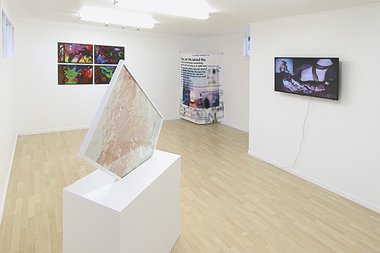

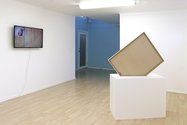
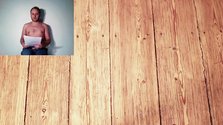
 Advertising in this column
Advertising in this column Two Rooms presents a program of residencies and projects
Two Rooms presents a program of residencies and projects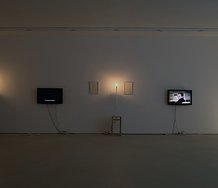

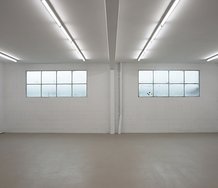
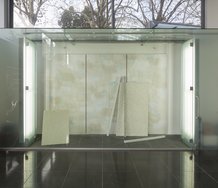
This Discussion has 1 comment.
Comment
Luke Munn, 11:34 a.m. 14 July, 2014 #
While Bishop is excellent in her breakdown (read: takedown) of relational aesthetics, activism, interventions, etc she obviously isn't looking in the right places if she thinks that digital/media/immaterial art practices are marginalised. While gallery shows push towards the physical (a tendency I've picked up on with previous reviews), there are many examples of artists, who far from being ignored, have gained their initial views (cultural capital) through largely internet/digital means: Cory Archangel, Rafael Rozendaal, Ed Fornieles, Jennifer Chan, Jesse Darling, to name just a few.
Secondly I think characterizing Val Gesto's aesthetic as tasteless is a bit reductive. These transformations go far beyond 'fan art', where the recognition of the subject maintains primal importance - a fantasy scenario taking place in that world or a rendering of heroes 'as good as' production grade. Rather than a mere reflection of trash Tumblr aesthetics, I think there's something more intentional happening here - the crafting of an aesthetic that floats as long as possible outside the monolithic mainstream, an image which slips between communities and categories as something temporarily irredeemable. In a contemporary soaked in a deluge of incessantly circulating images, this is both increasingly difficult and a project worth pursuing.
Participate
Register to Participate.
Sign in
Sign in to an existing account.